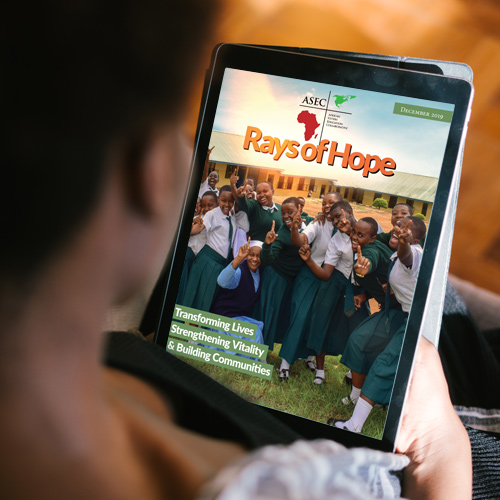A girl lays head to foot with one of her classmates in a tiny twin bed. She wakes up a bit before dawn so she can bathe from a bucket of water outside without anyone seeing her. When school starts for the day, she sits on the ground in a chicken run and listens to the teacher’s lesson. At lunchtime, she gets her food and finds a space in the corridor to quickly eat. When it comes time to study, she doesn’t have a book of her own. She shares one of the few books in the school with 500 other students.
When Zambia gained their independence in 1964, most mission schools were taken over by the government. But, over the years, the government has not been able to keep up with the maintenance and administration required. Many schools are run down.
Unable to manage, in 2017, the Zambian government offered many of these distressed mission schools back to the hands of the church. The Dominican Missionary Sisters of the Sacred Heart of Jesus (OP) accepted the call to serve the poor, rural community in the Diocese of Mansa, Zambia.
But the sisters did not know the conditions of Kabunda Girls' Secondary School, until they saw it with their own eyes.

Read Rays of Hope
Learn more about Catholic Sisters transforming poor, rural communities across Africa in our FREE Rays of Hope ebook.
Read It Now »
The school dormitories were overcrowded and many girls slept two to a bed. Their clothes hung from the rafters and over 500 girls shared one washroom. With inadequate dining facilities, many girls ate outside or in the hallway.
With 530 girls and only 300 beds, overcrowded dormitories and unkept facilities were the sad reality for girls who lived at the school. Their clothes hung from the rafters of the roof, which had no ceiling boards. With only one neglected washroom, the girls found alternatives. Many washed outdoors from a bucket in the early morning, before the sun came up. With inadequate dining facilities, many girls also ate outside. In fact, many also had classes under a nearby tree or on the dirt ground.
Three Dominican Sisters were assigned to run Kabunda School, which they renamed as Holy Trinity Girls Secondary School. The sisters worried about the school’s conditions, about the dignity of the girls and their hygiene.
“What kind of school did we accept?” they asked each other many times.
Shortages of infrastructure, teaching and learning materials were evident from day one. Every building on the grounds was in desperate need of renovation. But the sisters knew that God had a purpose for calling them to serve at this particular school; to uplift the life of the poor and marginalized girlchild in this remote area.
Although they had a lot of work to do, the sisters got started right away.
Sr. Christine Mwape was one of the three sisters assigned to the school in 2017. She had recently graduated from ASEC’s Sisters Leadership Development Initiative (SLDI) program, where she studied Administration and learned skills like resource mobilization and grant writing.
The skills that Sr. Christine learned in SLDI proved to be invaluable to improving the lives of girls of Holy Trinity.

The girls participate in home economics class. Donations acquired by SLDI alumna Sr. Christine have changed the face of Holy Trinity and enhanced the learning and living environment for the girls enrolled at this school.
She started to send emails and network with anyone she could think of that may be able to help turn the school around. In the first year, donations began to come in for water reticulation and to purchase textbooks and kitchen supplies.
In April, 2019, Sr. Christine travelled to Germany to raise funds for the very expensive and urgent needs of the school: the construction of two dormitories and renovation of the existing run-down infrastructure. She gained the interest of a funder and was able to secure a grant to cover the costs of the construction and renovation projects.
In addition to the construction of two dormitories, the grant also paid for the dormitory furnishings (beds, mattresses, tables, etc.) and a computer laboratory for the girls.
This donation acquired by Sr. Christine has changed the face of Holy Trinity Girls Secondary School and enhanced the learning and living environment for the girls enrolled at this school.
Sr. Christine thanks ASEC for sharpening her resource mobilization skills. She said that SLDI has helped very much in the mission work of her congregation and the church at large. She is currently seeking funds for two more important projects in rural Zambia: a kitchen/dining hall at the girls’ school and the construction of the first ever boys secondary school to be run by the Dominican Sisters.







